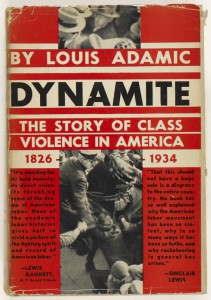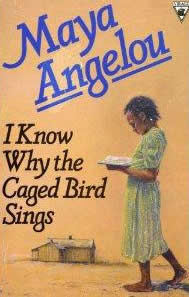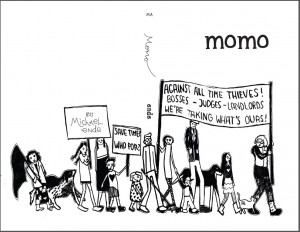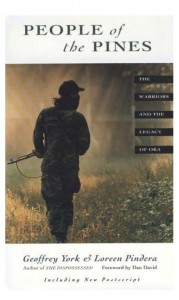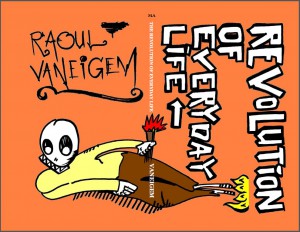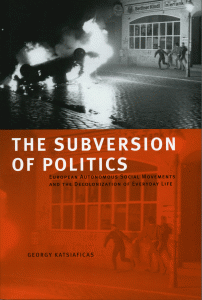Against His-Story, Against Leviathan!
Fredy Perlman 1983 296p 5 x 8
How Civilization encroached on free peoples. On every continent scribes, traders and kings promoted division of labor, professional armies, social discipline, national, ethnic and class fervor.
A Novel
Dorothy Allison 1992 320p 6 x 8
Greenville County, South Carolina, a wild, lush place, is home to the Boatwright family—rough-hewn men who drink hard and shoot up each other’s trucks, and indomitable women who marry young and age all too quickly. At the heart of this astonishing novel is Ruth Anne Boatwright, known simply as Bone, a South Carolina bastard with an annotated birth certificate to tell the tale. Observing everything with the mercilessly keen eye of a child, Bone finds herself caught in a family triangle that will test the loyalty of her mother, Anney. WARNING: sexual violence.
A Memoir
Reinaldo Arenas 1992 336p 5 x 8
Written while dying of AIDS in New York City in the late 1980s, this is Arenas incredible story, told so movingly and elegantly in all its misery and beauty. Born in the impoverished countryside of Cuba, Arenas ran away to join guerrillas at age 15. Shortly after, Castro came to power and Arenas – like many Cubans – enjoyed a brief period of jubilation. Within a few years, though, Arenas found himself in camps (and later prison) for his writing (banded in Cuba for its criticism of Castro) and his homosexuality. Arenas’ story is full of what people will do to fight repression or lengths to which they’ll go to save themselves at the cost of friends and strangers, and ultimately the unstoppableness of sexuality. A must read for supporters of Cuba.
Women, The Body and Primitive Accumulation
Silvia Federici 2004 393p 6.5 x 9.5
Marx says that Capitalism comes into the world dripping with blood from the enclosure of common lands, the enslavement of europeans to the wage and the extermination and enslavement of africans and native americans. Foucault looks at the same period of time and speaks only of mass incarceration, torture and execution, yet neither him nor Marx say anything of the Witch Hunts. Federici shows their complete ignorance for the role of the Witch Hunts and the millions of women who lost their life during the birth of Capitalism. Caliban and the Witch is the history of this ‘transition’. From the peasant revolts of the middle ages to the rise of mechanical philosophy, Federici investigates the capitalist rationale for social reproduction. Federici shows how the struggle against the rebel body and the alienation of mind and body were intricate parts in the rise of Capitalism. A challenging, but good book to read with friends!
100 Years of Class Violence in America, 1830-1930
Louis Adamic 1935 380p 5 x 8
The history of labor in the United States is a story of almost continuous violence. In Dynamite, Louis Adamic recounts one century of that history in vivid, carefully researched detail. Covering both well- and lesser-known events — from the riots of immigrant workers in the second quarter of the nineteenth century to Molly Maguires of the Pennsylvania coalfields, the General Strike of 1877, the early and reckless years of steel working, to the Mooney-Billings trial and Adamic’s own experience with the IWW — he gives precise, and often brutal, meaning to the term ‘class war.’
Peter Shaffer 1974 145p 5 x 8
Equus. . . . This is a play about a disgruntled child psychiatrist who takes on the case of a young man who’s blinded six horses. Over the course of trying to treat the youth, everything is called into question for the doctor and us, the reader. Hold onto your britches, it’s going to get bumpy!
I Know Why the Caged Bird Sings
Maya Angelou 1969 304p MMPB
Born in St. Louis and sent with her brother and no adults on a train when only a few years old to live with her grandmother in Stamps, Arkansas, this is the first – and best – of Aneglou’s memoirs, spanning ages 3-17. Through Angelou’s eyes we can see segregated Stamps, racially divided St. Louis and the sexual violence she experienced at age 8, and later 1930s California. Angelou easily let’s one get lost in her narrative: terrified and helpless as a child at the whim of the world, feeling powerful and triumphant when her grandmother stands up for herself, or cool-headed when stranded in rural Mexico.
Sailors, Slaves, Commoners, and the Hidden History of the Revolutionary Atlantic
Peter Linebaugh & Marcus Rediker 2001 433p 6.5 x 9
Spanning an impressive 200 years, this books takes us from the early 1600s (and the years leading up to the English Civil War) through the golden age of piracy, through the tumultuous years leading up to the American Revolution (a lot less white and manly than you may have been lead to believe) up to the Great Awakening following the betrayal of the American Revolution. All along hierarchical relationships are being imposed from above, while sailors, sex workers, slaves and others refuse from below. This is the story of the creation of Race. An amazing book – what history should be.
Or, the strange story of the time-thieves and the child
who brought the stolen time back to the people
Michael Ende 1973 265p 5 x 8
From the author that brought you The NeverEnding Story, this is the amazing young-adult tale of a little girl, who after discovering that representatives from the Time-Savings Bank have convinced everyone she knows to work more now to save time for later (rendering her friendless), goes on a mission to destroy them. Fucking awesome. Recommended to be read aloud while snuggling with friends by a fire in the depth of winter, or along a creek while playing hookie!
Henri Charrière 1969 576p 5 x 8
For decades Charrière tried to escape from the french penal colony he’d been sentenced to for murder he claims he didn’t commit by going on one cavale after another. An amazing fucking book. Some say Charrière tells cavales that weren’t his own as though they were, which would make Papillion a collective history of excarceration.
The Warriors and Legacy of Oka
Loreen Pindera & Geoffrey York 1991 425p 6 x 9
In 1990, after the announcement to expand the local 9-hole golf course to an 18-hole one right through a Mohawk cemetery, a small band of women blocking the development and years of disappointment, manipulation, exploitation and genocide soon inspire an armed stand-off. For months the golf course was barricaded by Mohawk warriors, as was one of the few bridges going across the border to the US. Fucking amazing story.
The Revolution of Everyday Life
Treatise on Living for the Younger Generations
Raoul Vaneigem 1967 336p 5 x 8
One of the classic situationist texts, rumored to have helped inspire the uprising in Paris in May of 1968. Where Marx has missed out on the last 100 years of capitalist development, while many philosophers, academics and artistic specialist have cornered, neutralized and commodified subversive and revolutionary ideas, and where union and student representatives have come to represent the bosses and the administration – Vaneigem blasts them all away. The revolutionary subject is potentially anyone now: “People who talk about revolution and class struggle without referring explicitly to everyday life, without understanding what is subversive about love and what is positive in the refusal of constraints, such people have a corpse in their mouths.”
Paul Avrich 1967 320p 5.5 x 8.5
From the nihilists of the 1870s to their anarchist, leninist and maximalist heirs, Avrich covers everything: bomb-throwers, philosophers, workers’ councils, the ukrainian makhnovtchina, the krondstadt uprising, the bolshevik betrayal, and the ordinary peasants, soldiers and workers committed to fighting for a truly free world. One of my favorite books, easily one of the best English-language books on the russian revolution. As always, Avrich delivers!
The Rose of Fire Has Returned:
The Struggle for the Streets of Barcelona
Anonymous 2012 75p 4 x 8
“In may 2011, tens of thousands occupied plazas throughout Spain in a protest movement that prefigured similar occupations around the world, including the Occupy movement in the US. On March 29, 2012, a nationwide general strike erupted into massive street-fighting in Barcelona, as participants wrested control of the streets from riot police. How did this come to pass, and what can it tell us about what will follow the occupation movements outside of Spain?”
A Surrealistic Novel in Collage
Max Ernst 1934 208p 8 x 11
Accredited with inventing collage, this is one of Ernst’s finest example of it. All five original brochures reproduced in large, crisp and beautiful images.
European Autonomous Social Movements & The Decolonization of Everyday Life
George Katsiaficas 1997 312p 6 x 9
George Katsiaficas’s account covers the period 1968-1996 and pays special attention to the role of autonomous feminist movements, the effects of squatters and feminists on the disarmament movement and on efforts to shut down nuclear power, and the antifascist social movements developed in response to the neo-Nazi upsurge. In addition to providing a rare depiction of these often overlooked movements, Katsiaficas develops a specific notion of autonomy from the statements and aspirations of these movements. Drawing from the practical actions of social movements, his analysis is extended into a universal standpoint of the species, a perspective he develops by uncovering the partiality of Antonio Negri’s workerism, Seyla Benhabib’s feminism and notions of uniqueness of the German nation.




